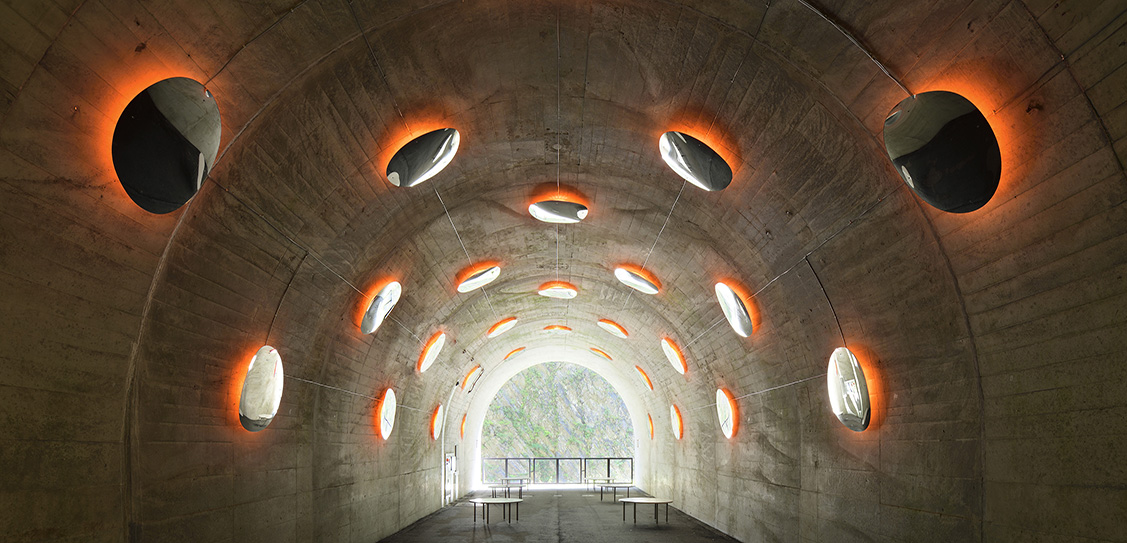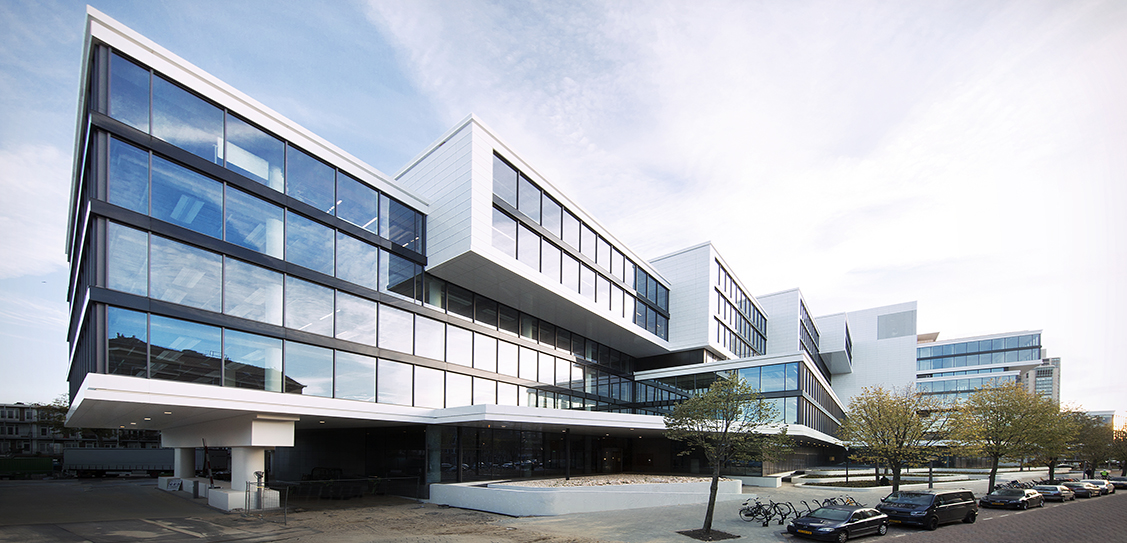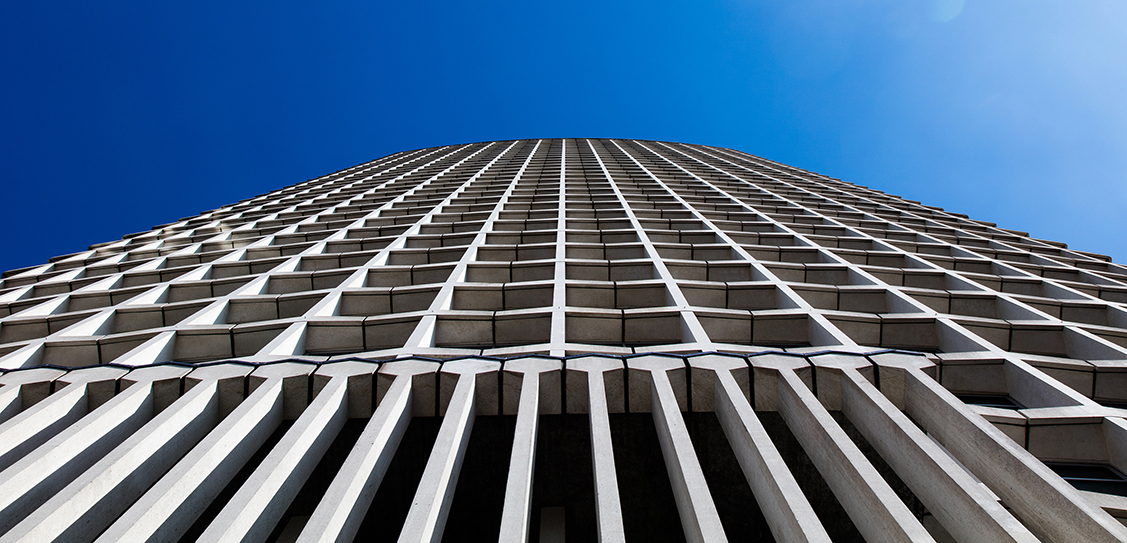The Department of Culture and Tourism, Abu Dhabi, conceived the concept design for Qasr Al Hosn, carefully conserving each element of the building’s architectural ensemble to its era of origin. This approach of making the evolution of building legible, and also the authenticity of the historic fabric readily identifiable, relied heavily on physical investigations and archival research undertaken over an extensive period of time. This research enabled the conservation works to illustrate the intelligence of traditional building techniques in creating a habitable dwelling in a hot, arid coastal desert environment from a limited palette of materials. The concept not only aimed to conserve and restore the building fabric but to also reinstate the historic coastal desert context in which the building was historically set. This provides an immediate appreciation of Qasr Al Hosn’s relationship with the land and its vernacular origins.
Centre Point Tower was designed by George Marsh, Richard Seifert’s partner, in the 1960s, its modern materiality and imposing height represented a new generation of Londoners and the creative energy of the time. Despite its Grade II listed status, the 34-storey office tower sat largely vacant and neglected. Conran and Partners was enlisted to update, convert and reconfigure the Tower for modern day use. Whilst the concrete frame has been carefully restored, the glazed envelope has been replaced entirely, and whilst it is to the original pattern, it is to modern thermal and acoustic standards. Furthermore, the way the building meets the ground has been fundamentally changed as the project moves away from vehicles towards prioritising people.
The ‘Tunnel of Light’ by MAD Architects, is the restoration of the 750-meter-long Kiyotsu Gorge Tunnel in Japan’s Niigata Prefecture. The revitalization project sees the installation of several artistic spaces along the historic lookout tunnel, with the intention of bringing back the cultural energy that once empowered the region. The ‘Tunnel of Light’ opened on the occasion of the 2018 Echigo-Tsumari Art Triennale. Each installation draws on one of the five elements of nature – ‘Periscope’ (wood), ‘Expression of Color’ (earth), ‘Invisible Bubble’ (metal), ‘The Drop’ (fire), and ‘Light Cave’ (water) – transforming points along the tunnel with architectural and artistic atmospheres.
For Rivierstaete, demolition and new construction would have been the easiest option. Because of the special character and great potential of the building, however, the team decided to opt for renovation. As winners of the pitch, MVSA Architects wanted to embrace the original design, retaining its positive elements and making the existing construction visible. MVSA proposed transforming the large, empty monolith – the huge, blocky white box – into a building that would fit seamlessly into its surroundings and establish a lively relationship with the neighbourhood.
The new Smith Campus Center is a radical re-appraisal of the existing ten storey building, ‘the Holyoke Center’, designed by Josep Lluis Sert in the 1950’s. The project reconfigures the first, second and tenth floors, reinterpreting the history and logic of Sert’s architecture in a series of additions to and removals from the existing fabric to create a family of new internal and external spaces interspersed ‘with captured’ landscape. The new Welcome Pavilion at the front of the building creates a front door for the University and re-establishes a stronger connection between Sert’s Arcade and Harvard Yard.
10 Jay Street honors the relationship between neighborhood and waterfront, heritage and innovation. A delicate balance of glass, steel, brick, and spandrels give the building gravitas without compromising its industrial heritage. Originally the Arbuckle Brothers sugar refinery was conformed of two buildings with a shared, piecemeal interior façade that held no landmark heritage. A demolition during the 1950s left three of the original facades and the interior party wall exposed to the East River shore. The team dug into the site’s history, drawing a series of skins that evoked both the sugar crystals and the detached complex crack. The design made this nuisance part of the narrative: a broken geode smooth on the outside and crystalline within.
To see more amazing entries from this year’s WAN Awards please click here.



